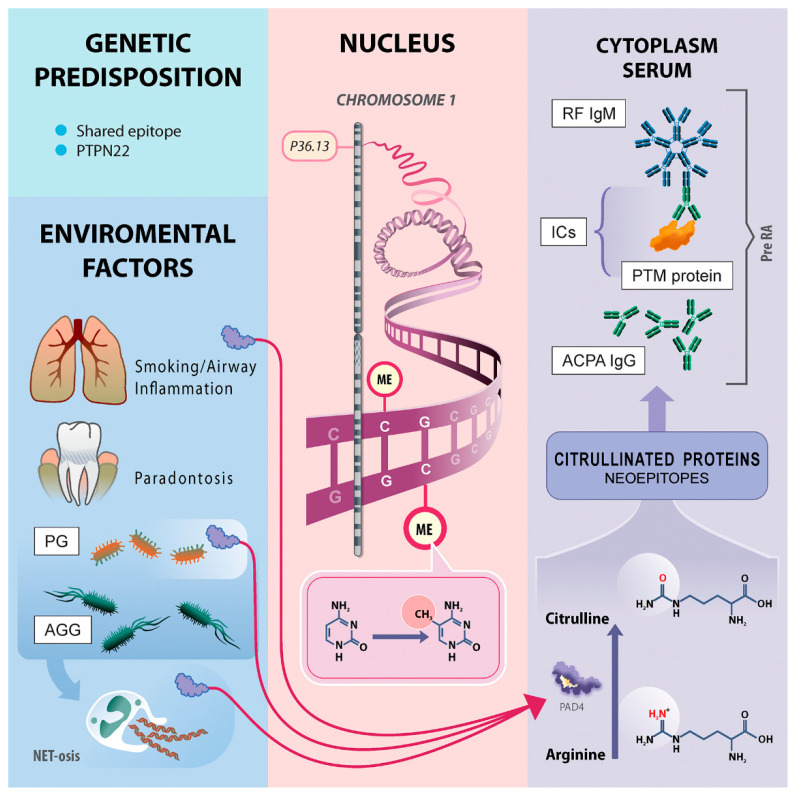Figure 4.
Pathways to RA development. The individuals with genetic predisposition (MHC—shared epitope, SNP of PTPN22) exposed to environmental factors (smoking, airway inflammation, periodontitis) have developed a shift in PADI4 gene methylation degree. The airway inflammation and smoking are connected with higher PAD activity [40]. NET-osis is a PAD4-dependent mechanism used during the host immunological response against exogenous bacteria like PG and ACC [41,42,43]. Additionally PG is a bacteria with its own PAD4 activity [44]. The dysregulation of PAD4 gene expression via methylation depends on the environmental impact on the mouth and lungs leading to elevated expression of PAD4 enzyme and increased conversion of arginine to citrulline in various proteins, leading to a loss of tolerance to citrullinated proteins and APCA synthesis. The ICs of citrullinated proteins and ACPA IgG become an antigen to RF production. After a period of ACPA and/or RF positivity called pre-RA and unknown “second hit”, the development of arthritis/synovitis is influenced in patients. Abbreviations: PG, Porphyromonas gingivalis; AGG, Aggregatibacter actinomycetemcomitans; ME, methylation; ICs, immunological complexes; ACPA, anti-citrullinated protein antibodies; PTM, proteins post-translationally modified proteins; PAD4, peptidyl arginine deiminases type 4; RF, Rgeumatoid Factor; Pre RA, pre-Rheumatoid Arthritis; PTPN22, Protein tyrosine phosphatase, non-receptor type 22, NET-osis Neutrophil extracellular traps activation and release.

